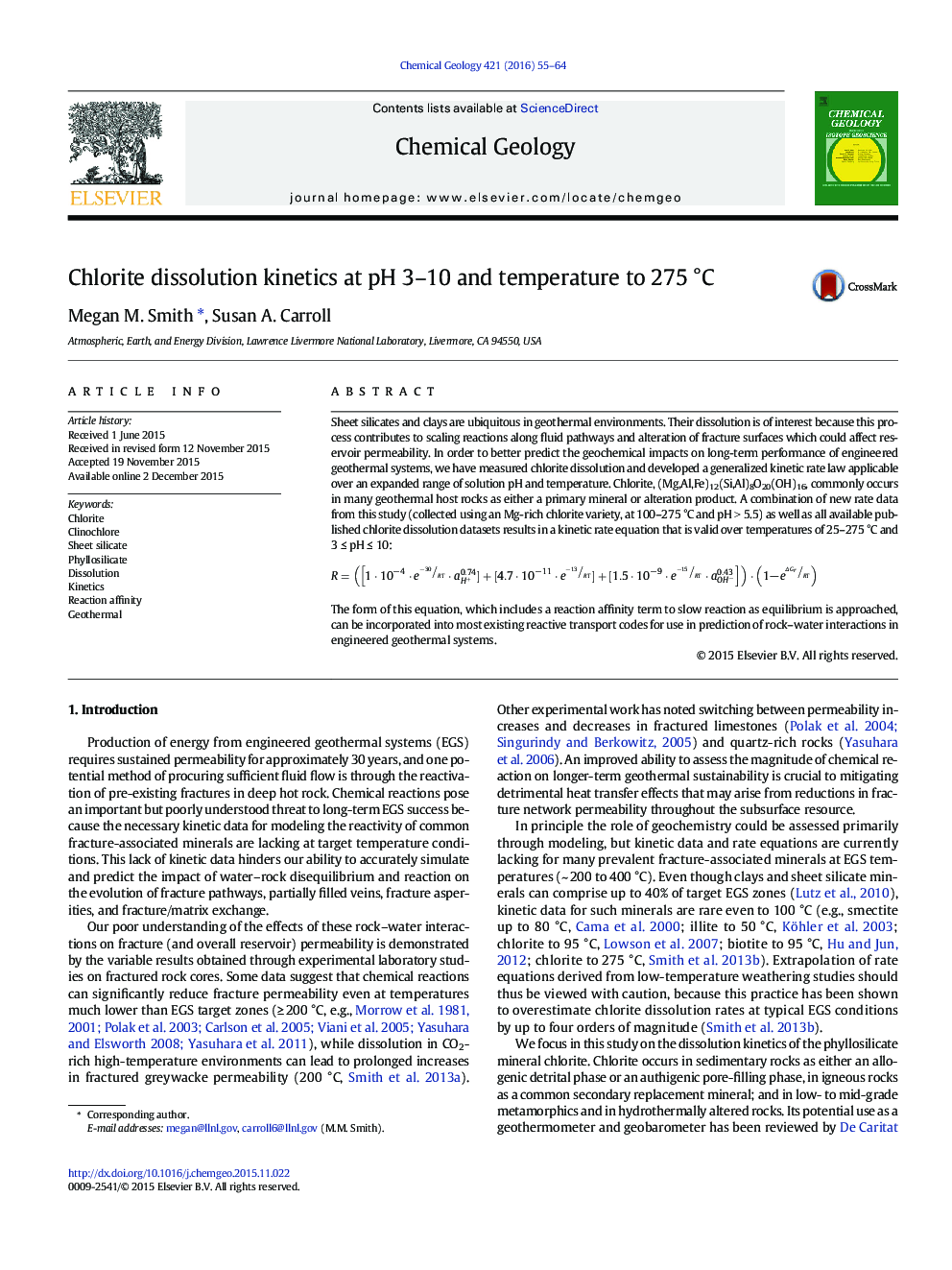| کد مقاله | کد نشریه | سال انتشار | مقاله انگلیسی | نسخه تمام متن |
|---|---|---|---|---|
| 6436173 | 1637553 | 2016 | 10 صفحه PDF | دانلود رایگان |

- 20 new chlorite dissolution rates were measured at neutral to alkaline pH and temperatures from 100 to 275 °C.
- Chlorite dissolution proceeds slowly at elevated temperature and rates show only weak temperature dependence for pH ⥠5.5.
- Fluid-chlorite equilibrium is favored at more alkaline pH, complicating the definition of far-from-equilibrium kinetic dissolution.
- Chlorite dissolution at temperatures of 25-275 °C and over a pH range of 3-10 can be described by a generalized rate model with three reaction mechanisms and a simple reaction affinity term.
Sheet silicates and clays are ubiquitous in geothermal environments. Their dissolution is of interest because this process contributes to scaling reactions along fluid pathways and alteration of fracture surfaces which could affect reservoir permeability. In order to better predict the geochemical impacts on long-term performance of engineered geothermal systems, we have measured chlorite dissolution and developed a generalized kinetic rate law applicable over an expanded range of solution pH and temperature. Chlorite, (Mg,Al,Fe)12(Si,Al)8O20(OH)16, commonly occurs in many geothermal host rocks as either a primary mineral or alteration product. A combination of new rate data from this study (collected using an Mg-rich chlorite variety, at 100-275 °C and pH > 5.5) as well as all available published chlorite dissolution datasets results in a kinetic rate equation that is valid over temperatures of 25-275 °C and 3 â¤Â pH â¤Â 10:R=1â 10â4â eâ30RTâ aH+0.74+4.7â 10â11â eâ13RT+1.5â 10â9â eâ15RTâ aOHâ0.43â 1âeÎGrRTThe form of this equation, which includes a reaction affinity term to slow reaction as equilibrium is approached, can be incorporated into most existing reactive transport codes for use in prediction of rock-water interactions in engineered geothermal systems.
Journal: Chemical Geology - Volume 421, 10 February 2016, Pages 55-64